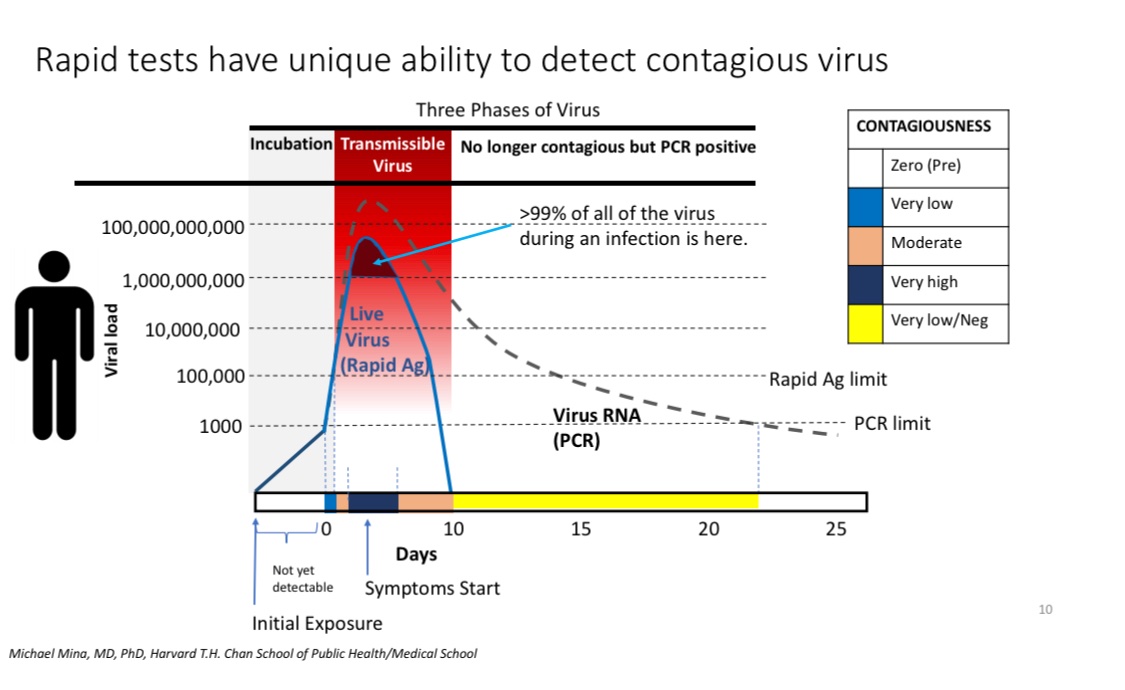Notes on sensitivity of rapid Ag tests for what matters: detecting infectious ppl
Sensitivity:
- Highly infectious (ie superspreader levels): >99%
- Moderately infectious (ie infect 2 or 3 ppl in a classroom): 90-95%
- Mildly infectious (ie spread to spouse only) ~80-90%
1/
Sensitivity:
- Highly infectious (ie superspreader levels): >99%
- Moderately infectious (ie infect 2 or 3 ppl in a classroom): 90-95%
- Mildly infectious (ie spread to spouse only) ~80-90%
1/
Further, symptoms vs no symptoms has no impact on test performance. Studies that say it does are not recognizing the sampling bias that enters their studies.
3/
3/
And here is critical data demonstrating sensitivity in multiple rapid tests to detect infectious virus
https://twitter.com/michaelmina_lab/status/1438032854907301893?s=20
• • •
Missing some Tweet in this thread? You can try to
force a refresh











